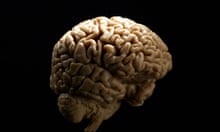A patient with a damaged spinal cord has become the first to be injected with embryonic stem cells in a landmark clinical trial of the therapy.
The controversial and long-awaited trial was given the green light by the US Food and Drug Administration in January last year, and is being organised by Geron, a biotech company based in California.
Doctors hope that injecting stem cells directly into the spine will help repair damaged nerve cells enough for paralysed people to regain some movement, but such treatments have yet to be tested in humans.
Though preliminary, the launch of the trial marked the "dawn of the stem cell age," according to one British stem cell researcher.
The patient, who has not been named, was treated on Friday at the Shepherd Centre, a specialist spine and brain injury unit in Atlanta, Geron said in a statement released today. The centre is one of seven potential sites in the US that can enroll patients for the trial.
In the trial, patients who have received a spinal injury within the past 14 days will be injected with living cells that are precursors of a kind found in the nervous system. The cells are expected to infiltrate the site of the injury and release chemicals that help repair damaged spinal cord nerves.
Tests in animals show that injections of the cells can improve their ability to walk and move after sustaining an injury.
"When we started working with human embryonic stem cells in 1999, many predicted that it would be a number of decades before a cell therapy would be approved for human clinical trials," said Thomas Okarma, Geron's president and CEO. The trial has triggered objections from some religious groups because the cells are derived from spare embryos created at IVF clinics.
In the phase one trial, doctors will establish only whether the treatment is safe to use. Geron will need to conduct further trials in coming years to assess whether the treatment is effective in repairing spinal cord injuries.
"This first-in-man study marks the dawn of the stem cell age. There are still many years of rigorous testing ahead and no doubt there will be setbacks and failures before we have safe and effective cell-based therapies," said Chris Mason, professor of regenerative medicine at University College London.
"This pivotal clinical trial is a major morale boost for scientists, clinicians and most of all patients by finally commencing the transformation of stem cells from a scientific curiosity into advanced healthcare."
Throughout the trial, doctors will monitor patients to see whether they are regaining sensation or better able to move parts of the body affected by their injury.
Sir Ian Wilmut, director of the MRC Centre for Regenerative Medicine at Edinburgh University, who led the team that created Dolly the sheep, said: "This is very exciting news, however, it is very important to appreciate that the objective of trials at this stage is to confirm first of all that no harm is done to patients, rather than to look for benefits. Once that has been confirmed then the focus moves on to development and assessment of the new treatment."




